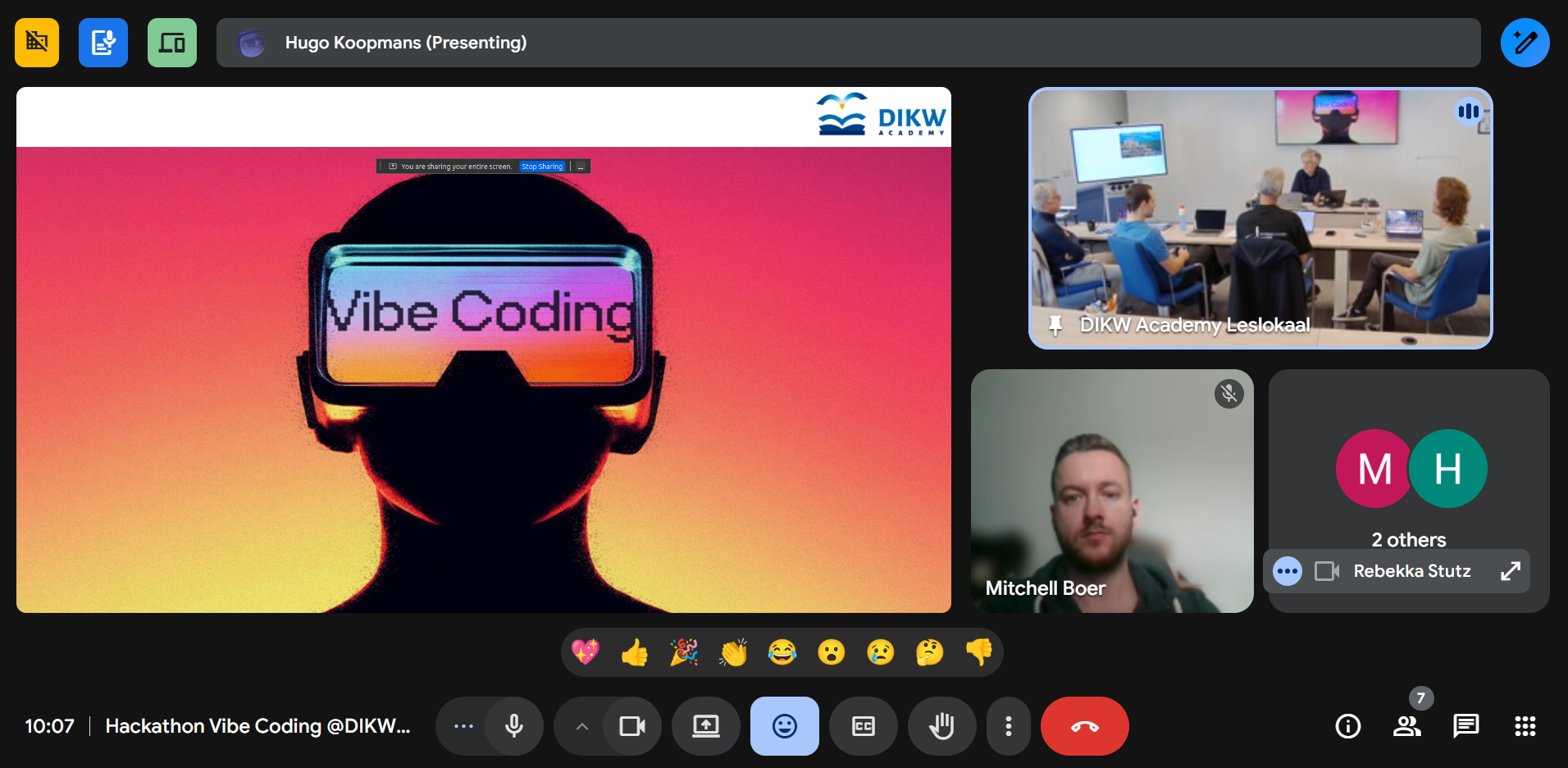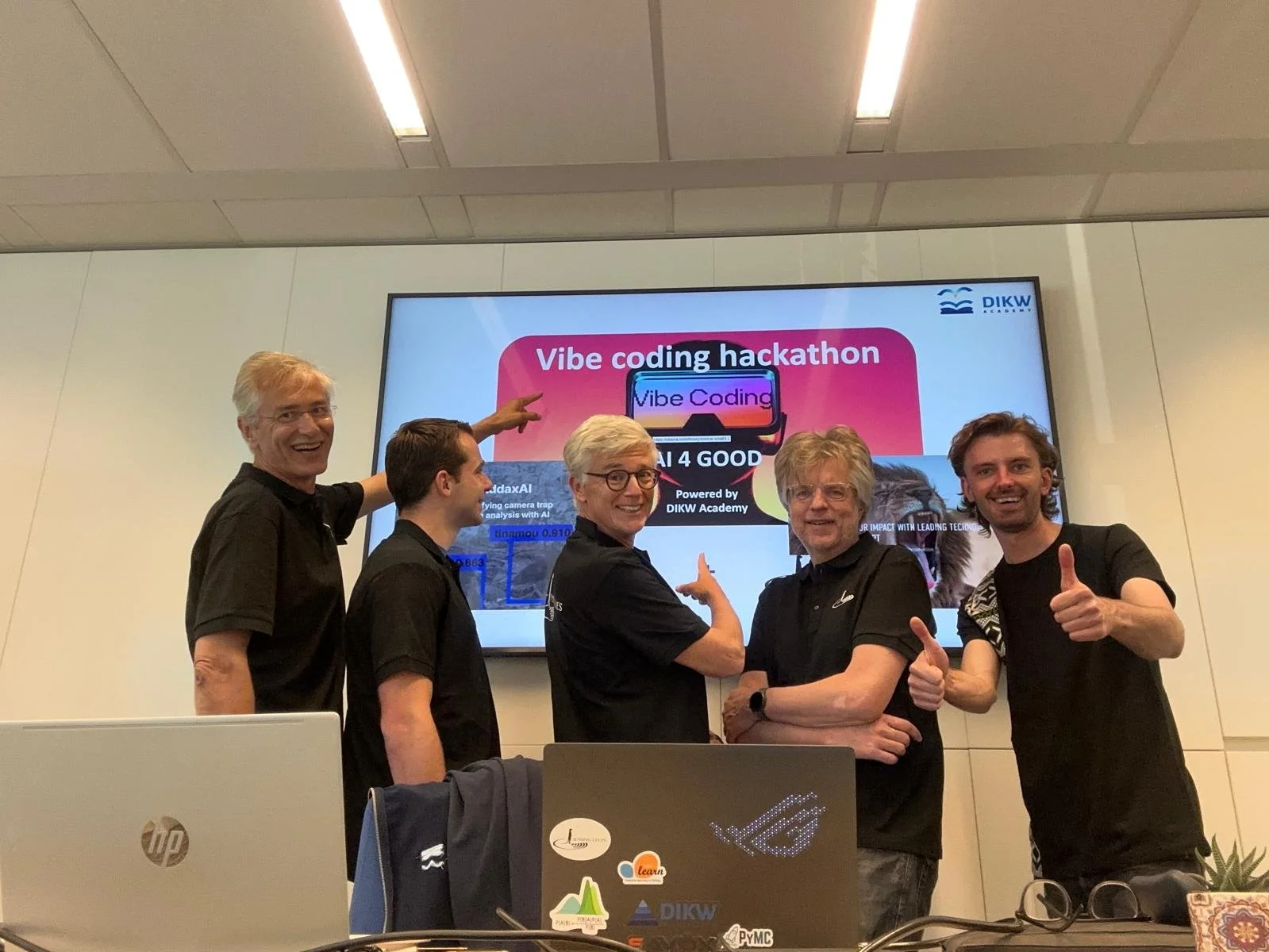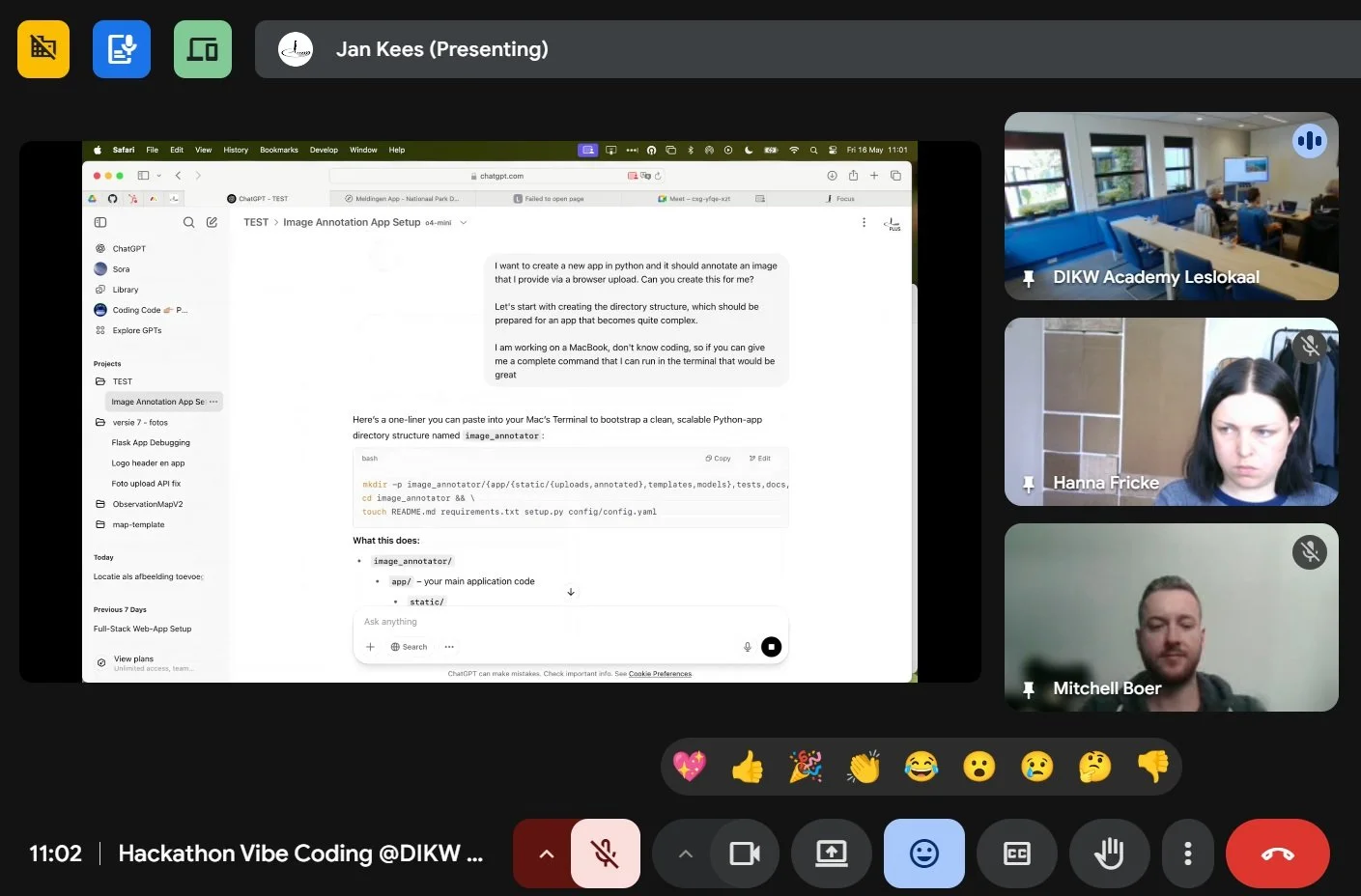VIBE CODING FOR NATURE
A hands-on hackathon experience
The hackathon on Friday, 16 May 2025, at the DIKW Academy in Nieuwegein brought together a mix of creativity, curiosity, and cutting-edge development. From 10:00 am until the late afternoon, eight participants — five on-site and three online – came together to explore Vibe Coding by doing.
What is vibe coding?
Vibe coding (or vibecoding) is an approach to producing software by depending on artificial intelligence (AI). A person describes a problem in natural language – usually just a few sentences – and a large language model (LLM), fine-tuned for coding, generates the software solution. This shifts the programmer’s role from writing code to guiding, testing, and refining AI-generated code. Computer scientist Andrej Karpathy, co-founder of OpenAI and former head of AI at Tesla, introduced the term in February 2025. He described it as: “It’s not really coding – I just see things, say things, run things, and copy-paste things, and it mostly works.”
Who joined and what we built
Jan-Kees, Peter, Menno, Hugo and Bas on-site
Five participants joined us on-site – Hugo, Jan-Kees, Bas, Peter, and Menno – while Mitchell, Hanna, and Alba participated online. Hugo kicked things off with an introduction to the Vibe Coding approach and outlined a few suggested directions. With that inspiration, the group split into smaller teams and jumped straight into hands-on experimentation.
Using specialised AI agents to define architectures, write, test, and debug code, we explored how AI can significantly reduce development time and enhance the quality of our applications. Here are some of the highlights from our work:
A vibe-coded new Graphical User Interface (GUI) for our Analytical Toolbox apps – making them easier and more intuitive to use. This new interface is scheduled for implementation in the coming weeks.
A demonstration of a vibe-coded web app for citizens to report disturbances.
A vibe-coded mapping tool that links “to be collected” ground truth samples with those already collected – helping to keep the ground truth map layer up to date.
An evaluation of a dockerised AddaxAI solution. Guided by an AI Architecture Agent, we determined within an hour that this setup didn’t meet our design requirements.
Brainstorming and prototyping ideas to enhance both our Environmental Time Series Analysis app and the soon-to-be-released Activity Pattern app.
And finally, a showdown involving a particularly tricky Excel formula. Let’s just say: the guy with AI cracked it in 10 minutes – while the guy without AI struggled for over an hour to get the same results.
What we took away
More than a traditional hackathon, this session was about rethinking how we design and build software. Vibe Coding challenges the idea of programming as a manual task, showing how natural language and AI can unlock new ways of working – faster, more business-driven, and surprisingly effective.
Hanna and Mitchell participated online
A big thank you to everyone who joined – both on-site and online – for an inspiring and productive day. We’re excited to see how these ideas develop and will be sure to keep you updated on the outcomes.
And this is precisely what our Sensing Clues Conservation Innovation Hub is designed for: to turn bold ideas into practical, impactful solutions. Whether it involves building apps or developing innovative conservation technologies, the Hub offers strategic guidance and hands-on support. Backed by a multidisciplinary team of full-stack developers, data scientists, and innovation experts, it provides the expertise needed to move from concept to real-world impact.



